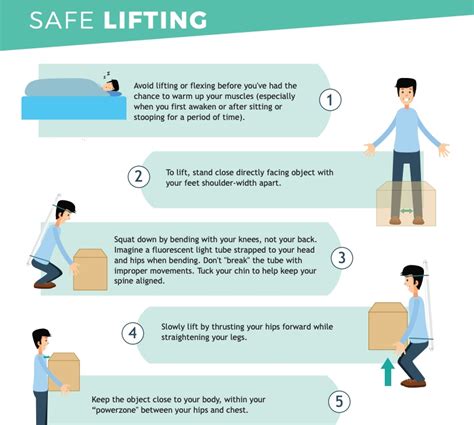Ultimate progressive overload for peak strength and muscle gains?

The Foundation of All Gains: Understanding Progressive Overload
In the pursuit of greater strength and bigger muscles, one principle stands above all others as the absolute cornerstone: progressive overload. Simply put, progressive overload is the gradual increase of stress placed upon the musculoskeletal system during training. Without it, your body has no reason to adapt, grow stronger, or build more muscle tissue. If you perform the same exercises with the same weight for the same number of reps week after week, your body will quickly adapt to that stimulus and your progress will grind to a halt. It’s the constant, intelligent pushing of your limits that forces your body to evolve.
Many aspiring lifters make the mistake of thinking ‘more effort’ is enough. While effort is crucial, it must be combined with a strategic approach to increasing demands. This isn’t just about ‘lifting heavier,’ although that is a primary method. Progressive overload encompasses a range of techniques designed to make your workouts progressively more challenging over time, ensuring continuous adaptation and results.

Methods of Progressive Overload: Beyond Just More Weight
While increasing the weight you lift is the most common and often most effective form of progressive overload, it’s far from the only one. A well-rounded training program will utilize several of these methods to ensure constant challenge and prevent plateaus.
1. Increasing Load (Weight)
The most straightforward method: lift more weight than you did previously for the same number of reps and sets. This is fundamental for strength gains.
2. Increasing Repetitions
If you can’t increase the weight, try to perform more repetitions with the same weight. For example, moving from 3 sets of 8 reps to 3 sets of 10 reps with the same load.
3. Increasing Sets
Adding an extra set to an exercise can significantly increase the total volume and stimulate further adaptation, e.g., from 3 sets to 4 sets.
4. Decreasing Rest Intervals
Performing the same amount of work (weight x reps x sets) in less time, by reducing your rest periods between sets, increases the intensity and demands on your cardiovascular system and muscular endurance.
5. Increasing Frequency
Training a muscle group more often throughout the week can lead to more opportunities for stimulus and growth, provided adequate recovery is in place.
6. Improving Form & Technique
While seemingly counter-intuitive, performing an exercise with stricter form, greater control, and a full range of motion can actually make it harder and more effective, even if you use slightly less weight initially. This builds a stronger foundation for future increases.
7. Increasing Time Under Tension (TUT)
Slowing down the eccentric (lowering) or concentric (lifting) phases of an exercise increases the duration your muscles are under stress, promoting hypertrophy.

Why Progressive Overload is Non-Negotiable for Strength and Hypertrophy
Your body is incredibly adaptable. When you lift weights, you create microscopic damage to muscle fibers. In response, your body not only repairs these fibers but overcompensates, making them bigger and stronger to better handle the perceived future stress. This is the essence of muscle growth (hypertrophy) and strength adaptation. If the stress doesn’t increase, your body sees no need to continue adapting. It will simply maintain its current level of strength and muscle mass because it’s already perfectly capable of handling the current demands.
For peak strength, the nervous system also adapts, becoming more efficient at recruiting muscle fibers and coordinating movement. Increased load is paramount for this neural adaptation. For muscle size, consistent increases in volume (sets x reps x weight) and intensity (how hard the muscle works relative to its capacity) signal the body to build more tissue.
Practical Strategies for Implementing Progressive Overload
- Track Everything: Keep a detailed log of your workouts, noting exercises, sets, reps, weight, and even RPE (Rate of Perceived Exertion). This is crucial for knowing what to beat next time.
- Set Realistic Goals: Don’t expect to add 10lbs to your squat every week. Small, consistent increases (e.g., 2.5lbs, one extra rep, or better form) add up significantly over time.
- Periodization: Incorporate cycles of heavier, lower-rep training with lighter, higher-rep training. This helps manage fatigue, prevent burnout, and hit different growth pathways.
- Listen to Your Body: Some days you’ll feel stronger, others weaker. Don’t force progressive overload if your body isn’t ready; that’s a recipe for injury or overtraining. Deload weeks are vital.
- Prioritize Recovery: Adequate sleep, nutrition, and hydration are just as important as the training itself. Your muscles grow when you rest, not when you lift.

Common Pitfalls and How to Avoid Them
While the concept of progressive overload is simple, its application can be complex. Avoid these common mistakes:
- Ego Lifting: Sacrificing proper form just to lift heavier weight. This increases injury risk and reduces muscle activation. Always prioritize form.
- Ignoring Other Methods: Only focusing on increasing weight and neglecting reps, sets, or TUT. This can lead to plateaus when weight increases become difficult.
- Overtraining: Pushing too hard, too often, without sufficient recovery. This can lead to diminished performance, fatigue, and injury.
- Lack of Consistency: Progressive overload is a long-term game. Inconsistent training will hinder your ability to make continuous progress.

Designing Your Ultimate Progressive Overload Plan
Ultimately, the key to peak strength and muscle gains lies in intelligently applying progressive overload. Start by choosing a well-structured workout program that suits your experience level. Within that framework, consistently strive to make small, incremental improvements using the various methods discussed. Track your progress diligently, listen to your body, and adjust as needed. By making progressive overload the central tenet of your training philosophy, you’ll unlock your body’s incredible potential for continuous growth and adaptation, ensuring you never stop getting stronger and building the physique you desire.










